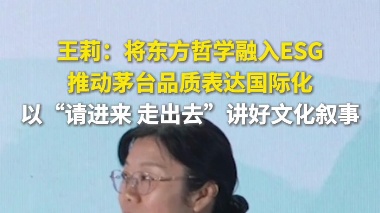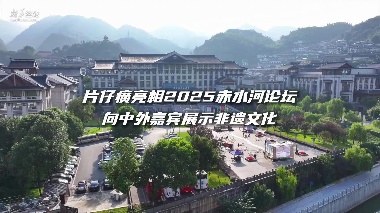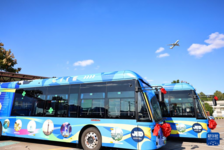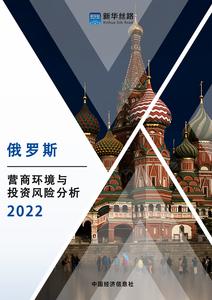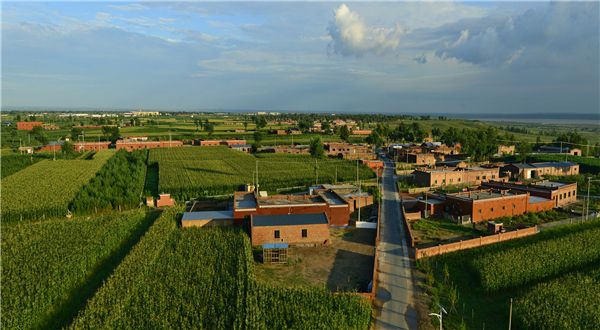
In 2016, by establishing and implementing the “six precise items” and “five-channel project” targeted poverty alleviation measures, we took the lead in fulfilling the tasks of lifting 13,047 people from 5,220 households below the national poverty line across the city out of poverty, helping Hanggin Banner remove the label of an impoverished banner in the autonomous region, bringing 21 impoverished gaqas in the autonomous region out of poverty and increasing the annual per capita net income of 33,918 people from 13,593 low-income households below the minimum subsistence allowance line by over 20% in one year, thus fulfilling the task of poverty alleviation with high standard, high level and high quality. In 2017, we adhered to the principle of firm belief, persistent policy, consistent input and steady effort in the implementation of poverty alleviation work across the city, continued to implement “six precise items” and “five-channel project” support measures, continuously enhanced poverty alleviation progress and focused on the construction of three-in-one poverty relief structure of industrial poverty relief, intra-industry support and social assistance, to integrate strong forces for wining the poverty alleviation battle and effectively building a moderately prosperous society in all aspects.
I. Precisely identifying impoverished population and standardizing archiving work
First, unifying identification standards and seriously investigating backgrounds. According to the “four clarifications” working requirements for poverty alleviation, we unified the identification standards for impoverished population and seriously investigated their backgrounds by taking precise identification as the premise and basis of wining the poverty alleviation battle. Taking per capita net income of peasants and herdsmen in 2015 below RMB 2,968 determined by national authority as the poverty line with integrated consideration of “two assurances, three guarantees”, among others, we strictly implemented the impoverished population precise identification procedure of “two disclosures and one announcement” and accurately identified impoverished population, thus avoiding the occurrence of identification inaccuracy and basic level conflict. By reference to poverty relief experience of advanced regions, we repeatedly carried out the precise identification and archiving of impoverished population and reviewed their basic status. The results show a total of 13,047 people from 5,220 poor household below the national poverty line, including 2,140 from minority groups which accounted for 16.4% of the impoverished population. In order to further expand the scope of support, we included low-income population below the RMB 4,968 (minimum subsistence allowance standard for peasants and herdsmen in Ordos at the end of 2015) minimum subsistence allowance line for rural and pastoral areas into the scope of identification while conducting the precise identification. Specifically, we identified 13,593 households totaling 33,918 people below minimum subsistence allowance line in rural and pastoral areas, including 6,566 people from minority groups which accounted for 19.4% of the low-income population. In 2011, the Autonomous Region determined Hanggin Banner as an autonomous region-level poor county, which had a total of 3,042 poor people below the national poverty line and 5,931 low-income people below municipal minimum subsistence allowance line. Besides, 21 autonomous region-level poor gaqas were identified, including 17 in Hanggin Banner, and respectively 2 in Uxin Banner and Otog Front Banner. There were a total of 723 poor people below the national poverty line and 1,271 low-income people below municipal minimum subsistence allowance line in poor gaqas, respectively accounting for 5.5% of poor population below the national poverty line and 3.7% of the low-income population below municipal minimum subsistence allowance line. We ensured precise and complete identification of poor banners, gaqas, population and municipal low-income population, laying a solid foundation for precise policy implementation.
In 2017, we organized banners to carry out the “Look Back” work for poverty alleviation at the beginning and in the middle of the year to ensure timely inclusion and exclusion of eligible impoverished population and strictly prevent figures-oriented (namely non-effective), passive and fake poverty alleviation. At the beginning of the year, we organized the “Extensive Visits” activity among municipality- and banner-level supporting departments, enabling countryside-stationed working teams and principal helpers for the poor to get information on gaqas and poor households one by one, so as to offer suggestions to them, improve the support plans and poverty alleviation plans, and prepare for farm work in spring and daily production on an overall basis. On the basis of implementing “Look Back” and “Extensive Visits” activities, we identified 13,994 households totaling 35,038 people for poverty relief work in 2017, including 278 poor households totaling 680 people newly identified for archiving, 5,220 poor households totaling 13,047 people for continuous enhanced support out of archiving, and 8,496 low-income households totaling 21,311 people below municipal minimum subsistence allowance line.
Second, completing basic information and standardizing archiving. According to “453” village-level wall map operation requirements for the Autonomous Region, we further improved wall map operation work for poverty alleviation, uniformly printed the “Three Sets of Accounts” Manual with one copy issued to each of the 5,220 poor households below the national poverty line, and completed all gaqa-level “453” wall maps as required. Besides, we established and completed “two registers” for poor population below the national poverty line and municipal minimum subsistence allowance line, designed the poverty relief manual on a uniform basis across the city on the basis of the Poverty Relief Manual prepared under the supervision of the State Council Leading Group Office of Poverty Alleviation and Development, refined income and expense estimation, support status, among others, uniformly distributed 14,000 copies of Poverty Relief Manual for national-level poor households, including 1,000 copies in Mongolian, and 39,000 copies of Poverty Relief Manual for municipal low-income households, including 2,500 copies in Mongolian. We prepared an information register, a poverty alleviation plan and a support measure for each household, laying a foundation for precise policy implementation and targeted poverty alleviation. The Municipal Office of Poverty Alleviation developed the Ordos big data management platform for targeted poverty alleviation, which enabled support departments, resident cadres and support principals to update information on the support provided for poor households on a timely basis by mobile internet access via the mobile app, realizing dynamic management of targeted poverty alleviation data. Hanggin Banner also developed a platform for the same purpose. As a whole, we prepared registers for households, accounts for gaqas, ledgers for Sumus and electronic records for banners for archiving work.
II. Implementing “six precise items” and “five-channel project” measures and cementing poverty alleviation progress
First, helping a batch of people get rid of poverty through industrial support and employment. From 2016 to now, we provided RMB 228.66 million for industrial support and realized full coverage for industrial support of poor population below the national poverty line. For the “delivery to village and household” project, RMB 18.8 million of special funds in total was allocated, with RMB 500,000 for each gaqa covered by project; and the city focused its efforts on implementing four types of projects including small farmland water conservancy projects, breeding projects, poor household dilapidated building renovation projects and village-level mutual fund projects. Risk compensation funds and interest subsidy funds of the Financial Services Enabled Poverty Relief Project were all distributed to banners, with each banner accumulatively granted RMB 860 million of loans, including RMB 100 million of “Strengthened-Farmers Loan” and RMB 760 million of “Enriched-Farmers Loan”. We provided support for 17,823 peasant and herdsman households, including 7,186 poor households, and for 92 leading enterprises and agriculture & husbandry special cooperatives. Meanwhile, the Financial Services Enabled Poverty Relief Project completed interest subsidy for loans due in 2014-2015 and arranged a total of RMB 150.713 million loans with interest subsidy, involving 2,348 peasant and herdsman households, 36 small, micro enterprises and agriculture & husbandry cooperatives with a total of RMB 7,593,500 of interest subsidy. As for the poverty-alleviation training project, we provided agriculture and husbandry practical skill training for labor force in rural and pastoral areas, and transfer employment skill training for people willing to seek outside employment, ensuring at least one person from a poor household to have at least one practical skill. We emphatically carried out trainings including maternity matron, cooking and agriculture & husbandry practical skills for poor population for 17,863 person times; carried out training for poverty alleviation cadres and leaders for 3,943 person times; enhanced efforts on employment and resettlement of poor population by holding the “Ordos university graduates employment meeting & targeted poverty alleviation special job fair” in cooperation with organization department of municipal party committee and human resources & social security bureau where 120 university graduates from poor households signed employment agreement with enterprises; preferentially provided public welfare positions for impoverished population, employing and resettling 966 poor people and university students from poverty-stricken families from 2016 to now. Furthermore, we energetically built benefit-linking mechanism and preliminarily formed the “shareholding-driven model” by fiscal poverty relief funds, financial poverty relief loans, impoverished household self-arranged shareholding in cooperatives and leading enterprises, the “gaqa economy-driven model” by supporting gaqa collective economy with fiscal poverty relief funds, and then driving the development of impoverished households, the “tourism poverty relief-driven model” by relying on high-quality green agricultural and animal products in impoverished regions, agriculture & husbandry landscape and cultural landscape, etc., and the “e-commerce platform-driven model” by driving the production and development of impoverished households through cooperatives, cultivating brands and expanding markets through e-commerce and helping impoverished households expand channels of increasing incomes.
Second, helping a batch of people get rid of poverty through ex-situ poverty relief relocation. As Ordos has a vulnerable ecological environment with 96% of its 87,000 km2 area being deserts, hills and gullies, adverse natural conditions come as a significant cause for poverty across the city. From 2016, we simultaneously carried out measures for getting rid of poor places, occupations and causes, and enhanced efforts in relocating impoverished population “that can’t be provided by the land” to places with relatively favorable production and living conditions with access to roads, electricity, water and urban areas. Ex-situ poverty relief relocation was a major priority for poverty alleviation of Ordos. We fully completed the four-year ex-situ relocation task assigned by the Autonomous Region in 2016. To be specific, we implemented ex-situ relocation for 3,920 households totaling 9,943 people, covering 8 banners which accounted for 76% of the total impoverished population, and synchronous relocation for 2,075 households totaling 4,970 people, covering 6 banners (excluding Jungar Banner and Otog Front Banner). We provided per capita RMB 60,000 subsidy for each ex-situ relocated household, including RMB 20,000 of house building subsidy and RMB 40,000 of infrastructure construction and industrial development subsidy. In 2016, the ex-situ relocation task of 3,000 people was assigned by the Autonomous Region, and central and regional supporting funds were all properly appropriated with relocation funds of the remaining 6,943 people fully raised by municipal finance department, which raised and assigned RMB 416.58 million of funds in total. As of the end of this July, the ex-situ poverty relief relocation task for 3,920 households totaling 9,943 people and 79 centralized settlement sites and self-built house project for separate settlement, which were implemented in 2016, were all completed and equipped with residence conditions, with relocated and settled households accounting for 90% (83% for Dalad Banner, 80% for Jungar Banner, 60% for Otog Front Banner, and 100% for other banners), an increase of 14 percentage points from the end of 2016, realizing full coverage of industry & employment support and social security guarantee for relocated households. As for remaining households not relocated and settled, house keys were all claimed. According to requirements of the Autonomous Region, households will be deemed as relocated and settled if house keys are claimed. In 2017, we have 73 new ex-situ poverty relief relocation households totaling 183 people, including 4 households of centralized settlement and 69 households of separate settlement. Currently construction of all centralized settlement houses is commenced and capped. There are 69 households of separate settlement, including 55 households that choose to build houses on their own and 14 households that choose to purchase houses in urban areas. Currently, construction of all self-built houses is commenced. The new ex-site poverty relief relocation plan for 2017 is expected to be completed by the end of November.
Third, helping a batch of people get rid of poverty by ecological compensation. We further improved the participation and benefit of impoverished population in major ecological projects and implemented reforestation project for 79,000 mu, benefiting 170 impoverished households. And we hired 141 poor people as forest rangers and grassland managers. Besides, we improved award and subsidy policies for public welfare forest and ecological protection, and fully paid awards and subsidies. Furthermore, we actively helped impoverished households develop economic forest plantation, provided 159,000 economic tree seedlings for free and planted 3,360 mu of economic forest, benefiting 807 impoverished households. And we intensified efforts on ecological governance project implementation in impoverished regions and energetically developed afforestation and sand control industry, leading more than 80 enterprises to participate in the effort of sand control & afforestation and afforestation and sand control industry development across the city, which effectively drove 100,000 peasants and herdsmen to have increased incomes. Due to their positive contribution to sand prevention and control and poverty relief, these enterprises were recognized by all sectors of society. On August 31, 2016, the National Forum on Poverty Relief Work in Desertification-prone Areas was held in Kubuqi Desert, Ordos, which was attended by Liu Yongfu, Director of the State Council Leading Group Office of Poverty Alleviation and Development. At the first poverty relief forum of China held on September 27, Dongda Mongolia King Group won the “contribution award” for Chinese poverty relief enterprises. At the national poverty alleviation award ceremony held on October 16, Wang Wenbiao, Chairman of Elion Resources Group, won the “devotion award” for national poverty alleviation work.
Fourth, helping a batch of people get rid of poverty through medical security. The Municipal Health and Family Planning Commission and the Municipal Poverty Relief Office jointly issued the Notice regarding Implementation of New Rural Cooperative Medical System Preferential Reimbursement Policy under the Municipal Targeted Poverty Alleviation Program in 2016 (EWJF [2016] No.151 Document) to implement “two-improvements, two-reductions and two-prohibitions” preferential policies for reimbursement of medical costs of the poor and improve reimbursement ratios of both New Rural Cooperative Medical System and commercial insurance for severe illness to 10 percentage points respectively; where patients with chronic diseases see a doctor in medical institutions in the city, no deductible amount will be set up; where they see a doctor outside the city, the deductible amount will be reduced by 50%, in spite of diseases; deductible amount for commercial insurance of severe illness will be reduced by 50% and reimbursement is free from any cap. Efforts were intensified to construct medical services in rural pasturing areas. In the city, 654 gaqa standard medical rooms were built up accumulatively, equipped with 80 mobile service cars, and 410 sets of standard equipment were provided for health centers in sumus. The Municipal Party Committee and the Municipal Government equipped national poor households and focus population groups with 13,970 “poverty alleviation and healthcare medical kits” in a unified manner. All banners and districts have established medical assistance funds, secured RMB 11.09 million of special medical fund for poverty alleviation and helped 1,934 people living in poverty (including 710 people below the national poverty line), effectively addressing such problems as poverty and re-poverty caused by disease. In 2017, we continued to implement the “two-improvements and two-reductions” preferential policies for medical reimbursement of people living in poverty; provided subsidy for all premiums of medical insurance for urban and rural residents for registered poverty-stricken population; offer free physical examination for registered poverty-stricken population, which covered 3,770 people and helped identify 2,462 disease-affected people; launched and implemented the “three channels” action plan; offered contracted family-doctor services for all poor households in the city, organized 821 family doctor teams and rural doctor teams, built health archives for all poverty-stricken people, and realized a contracting rate of 84.6%; we are now preparing the implementation plan for supplementary commercial insurance of severe illness for the poor, so as to avoid poverty and re-poverty caused by disease of the poor.
Fifth, helping a batch of people get rid of poverty through education aid. The Municipal Education Bureau issued the Notice Concerning Implementation Plan of Ordos for Targeted Poverty Alleviation Education Aid Program (EJF [2016] No.31), so as to intensify efforts to construct kindergartens and primary and secondary schools, implement the exchange and work shift system for principals and teachers within the jurisdiction, vigorously carry out vocational education and training, and strengthen team building of rural teachers and targeted aid for poor college students. We improved the targeted aid system for students at all school ages, fully implemented financial aid policies for students at regular high schools and secondary vocational schools and national student-origin-based loan polices, implemented the region-based financial aid policies for students from urban and rural households receiving subsistence allowances who are enrolled by regular higher education institutions, and offered one-time grant of RMB 40,000 to students newly admitted into regular colleges and RMB 30,000 to students newly enrolled in junior colleges. We fully implemented 12-year basic tuition-free policy for students in Chinese-teaching schools and 15-year free education policy for students in Mongolian-teaching schools. We intensified efforts to subsidize poverty-stricken students other than those from households receiving subsistence allowances, and provided grants of RMB 5,000, RMB 4,000 and RMB 3,000 for full-time postgraduates, college students and junior college students every academic year, respectively; as for currently enrolled Mongolian students other than those from households receiving subsistence allowances, we provided grants of RMB 7,000, RMB 5,000 and RMB 3,000 for students in national key universities, average undergraduate students and senior college students, respectively. We established and improved the financial aid system for poverty-stricken students at all school ages and realized full coverage of student aid. In addition to implementing municipal policies, all banners invested RMB 11 million of special education poverty relief funds to help 5,962 poverty-stricken students, including 1,319 impoverished college students. We improved schooling conditions in poverty-stricken areas and conducted re-construction and expansion of 46 schools in 2017. We fully implemented financial aid policies for poor students at all study phases, realized full coverage of aid policies ranging from pre-school education to higher education, and allocated RMB 330 million of various kinds of education allowances and subsidies at national, autonomous region and municipal levels, benefiting more than 262,000 students and teachers. The rain plan covers 333 poverty-stricken students and now RMB 500,000 of subsidies are been allocated.
Sixth, helping a batch of people get rid of poverty through guaranteeing basic living standard for people unable to work. We improved the basic pension insurance system for urban and rural residents, gradually improved basic pension standard, and guided all poverty-stricken people to participate in basic pension insurance for urban and rural residents. We gradually improved old-age security standard and its level, and built up 35 new nursing homes accommodating 145 poor people. The Municipal Civil Affairs Bureau, the Municipal Bureau of Finance and the Poverty Relief Office jointly issued the Implementation Plan of Ordos for Alignment between Social Assistance Policies and Development-oriented Poverty Relief Policies (EMF [2016] No.123), so as to promote effective alignment between subsistence security system and poverty relief and development policy in rural pasturing areas, include older poverty-stricken people who can’t get rid of poverty through industrial poverty in the minimum living standard security system for rural pasturing areas, and realize full coverage of all eligible residents. Since 2016, 5,218 people have been included in the minimum living standard security system for rural pasturing areas, including 2,047 poor people below the national poverty line. We realized poverty relief of social vulnerable groups like the old, the weak, the sick and the disabled in the city and guarantee basic living standards for them through social assistance policies. We improved the subsistence allowance standard in an appropriate manner. In 2017, the lowest subsistence allowance in the city reached RMB 5,268, up 6% compared to 2016, and each poor person under subsistence allowance program can received RMB 3,816 of subsistence allowance every year on average. We intensified efforts to temporary assistance and offered timely and effective aids to poverty-stricken people who fall into or fall back to poverty due to emergency.
III. Intensifying efforts in investment of poverty relief funds and regulating management and utilization of poverty relief funds
In 2016, various kinds of poverty relief investments in the city exceeded RMB 1,688 million, including RMB 1,325 million of special municipal fiscal poverty relief funds, RMB 167 million of special municipal relocation poverty relief funds, RMB 375 million of supporting agriculture and pasturing-related funds invested and integrated by banners (RMB 110 million of supporting funds and RMB 265 million of integrated funds), RMB 530 million of financial poverty relief loans issued, RMB 263 million of social assistance inputs (RMB 210 million of targeted assistance funds, and RMB 53 million of village-enterprise cooperation funds), and RMB 221 million of special poverty relief funds from the central government and the Autonomous Region. Overall, input intensity of poverty relief funds is unprecedented in the history, effectively guaranteeing accomplishment of poverty alleviation task. In 2017, based on the principle of “no reduction will be allowed for poverty relief funds and only increments can be supported”, the municipal treasury allocated RMB 138.2 million of special poverty relief funds, up 4.3% compared to the previous year, and all banners arranged RMB 155 million of special poverty relief funds from their fiscal budgets, up 80% compared to the previous year.
IV. Mobilizing all forces and pooling poverty alleviation efforts.
First, fully promoting the all-round responsibility system among cadres. The Municipal Party Committee and the Municipal Government fully promoted fixed-point all-round responsibility and connection activities of party and government offices, enterprises and public institutions, established the all-round poverty relief responsibility and connection mechanism for “leaders, units and cadres to assume individual responsibilities for districts, villages and households”, issued the Notice of Ordos Municipal Party Office and General Office of Ordos Municipal People’s Government regarding Further Carrying out Gaqa-based All-round Responsibility and Connection to Assist Poor Households by Cadres of Party and Government Offices, Enterprises and Public Institutions Directly under the City (TF [2016] No. 16) and organized cadres at all levels to offer “one-to-one”, “one-to-many” and “many-for-one” partner assistance based on the responsibility system of “every household has an assistance partner and everyone has responsibility”. Each unit assisted one gaqa, a city leader assisted four poor households, a cadre above division level assisted more than three poor households and a cadre at section level assisted one poor household. By giving full play to their model role, 37 city leaders took the lead to connect 24 sumus, 39 poverty-stricken gaqas and 130 poor households. At both city and banner levels, 1,214 organizations, enterprises and public institutions and 18,528 cadres realized full coverage of partner all-round responsibility and connection for 735 gaqas, 5,220 poor households below the national poverty line and 13,593 low-income households below the subsistence allowance standard in rural pasturing areas. The Municipal Poverty Relief Office issued Working Diary of Cadre Assistance and Poverty Alleviation Quiz, and carried out training of the first secretaries in villages and regulated village-based assistance in the city. Persons in charge of assistance assume all-round responsibilities for poor households and are not allowed to discharge from such responsibility until poor households get ride of poverty. Persons in charge of assistance prepared poverty relief plans based on realities of poor households poverty-stricken people, took targeted poverty relief measures, and obtained remarkable assistance results. Assistance units offered strong supports to gaqas and poor householders in term of infrastructure construction and industrial development of poor households. Assistance departments at city and banner levels input RMB 206.83 million accumulatively in the year, including RMB 100.43 of assistance funds and RMB 106.4 million of investments in projects introduced. We helped construct 1,183-kilometer roads, set up 498-kilometer power grid network, dug 1,021 wells, developed 24,000-mu irrigable lands, acquired 627 agricultural implements, built up 269,000 m2 covered pens, acquired 69,000 domestic animals, subsidized 223 poor students, held 109 skill workshops covering 4,689 people, and helped 183 people with severe illness.
This year, according to personnel changes, we have adjusted the all-round responsibility and connection for some municipal leaders. We further plumped up our working teams in villages, and adjusted and replenished 110 municipal cadres and the first secretaries; now, assistance departments at city and banner levels accumulatively input RMB 30.06 of assistance funds (RMB 7.17 million of assistance funds implemented and RMB 22.89 million of investments in projects introduced). From 2016 to present, RMB 236.89 million of assistance funds has been put in place.
Second, extensively mobilizing social forces to engage in poverty alleviation. The Municipal Association of Industry and Commerce and the Municipal Poverty Relief Office carried out "100-enterprise and 100-village” targeted poverty alleviation development action, 120 enterprises and 106 gaqas became partners for joint development, and 70 enterprises have signed the Agreement of Targeted Village (Gaqa) Assistance of Private Enterprises with assisted gaqas. Partner enterprises integrated capital and technologies with such means of production as specialty industries, labor resources and lands of poverty-stricken areas, promoted these areas to develop modern farming and animal husbandry through various modes, established the long-term interest connection mechanism between poor households and enterprises, and guaranteed continuous and steady income growth of the poor. Village-enterprise partner enterprises input a total of RMB 53.06 million focusing on development of planting and breading projects and infrastructure construction and offered supports and assistance to poor households. During the period of “Oct. 17” Poverty Relief Day Event, the Municipal Party and the Municipal Government issued the Poverty Relief Day Initiative of Ordos for 2016 to the public, the Municipal Poverty Relief Office, the Municipal Association of Industry and Commerce and the Municipal Coalition of Guangcai Program Societies held the “100 villages assisted by 100 enterprises” poverty alleviation forum, all banners also carried out diversified forms of activities. During the period of such activities, enterprises and enthusiastic people donated RMB 1,234,000 in total. We intensified efforts to build the social poverty relief exchange platform, focused on realization of effective alignment between poverty relief needs and social resources by information-based ways, set up the “Social Poverty Alleviation” sector at http://www.ordosfp.gov.cn/, further facilitating social poverty relief resource alignment. We opened a WeChat official account of “Ordos Micro-Poverty Relief” to release implementation of poverty relief work in a timely manner, established “Ordos Social Poverty Relief Online Donation Platform” through which enterprises and enthusiastic people can use their mobile APP to donate, realizing precise linkage between poor people and poverty relief projects.
V. Imposing strict requirements on standard exclusion procedures to completely eradicate figures-oriented poverty alleviation
According to the autonomous region’s procedures and standards, all banners and regions conducted self-inspection and self-examination for exclusion in October 2016, so as to find out shortcomings and make rectification and reform in a timely manner; all banners and regions fully launched the exclusion procedures in November. Meanwhile, the municipal party committee and municipal government made spot check for the income increase of poor households, and defined the measures for rectification, reform and improvement in details according to the results of spot check. On November 20, 2016, the municipal party committee and government issued the Measures for Implementing Poverty Exclusion of Ordos, and the general office of municipal party committee and the general office of municipal people’s government issued the Measures for Inspection and Acceptance of Income Increase for People below Minimum Subsistence Allowance Line in Rural and Pastoral Areas and for Exclusion for 2016 (for Trail Implementation). Against such exclusion standards, the inspection and acceptance of exclusion have been completed entirely so far. For the purpose of verifying the results of poverty alleviation, ensuring the precision of exclusion and completely eradicating numerical poverty alleviation, overall assessment, inspection and acceptance have been conducted for the work of poverty alleviation by the banner and region’s party committee and government from the end of November 2016 to December 10. Four assessment teams have conducted sampling inspection and acceptance for 49 sumus and 227 gaqas (13 poor gaqas) in nine banners and regions; and we have also conducted measurement, calculation and assessment for 535 poor households below the national poverty line and 256 impoverished households below municipal minimum subsistence allowance line. Through measurement and comprehensive assessment, the per capita net income of poor households below the national poverty line selectively checked in each banner and region was more than RMB 4,000, which meets the requirements of “two assurances, three guarantees”, achieving stable poverty alleviation entirely. Hanggin Banner met the standards for removing the designation as a poor banner, and 21 poor villages in autonomous regions met the exclusion standards; the per capita net income of impoverished households below municipal minimum subsistence allowance line was increase by more than 20%. So far, 5,220 poor households below the national poverty line across the city totaling 13,047 people have been excluded with announcement, thus the work of archiving and exclusion is to be completed. 21 poor gaqas in the autonomous region have completed the exclusion with announcement. Hanggin Banner, a major banner for poverty relief and development in the autonomous region, upon passing the first review by the city and the inspection and acceptance by the autonomous region, had the conditions for exclusion.
VI. Strengthening work innovation to build a long-term mechanism for poverty relief
We strengthened reform and innovation, and put effort into improving system and mechanism for poverty relief. Meanwhile, we studied and prepared the Instructions for Fully Consolidating the Results of Poverty Alleviation, build “Look Back”, “Extensive Visits” and other long-term mechanisms, and strengthened the precise identification and precise exclusion for poor population; put forward specific requirements for building a benefit-binding mechanism between economic organizations and poor households; issued the Instructions for Strengthening Industrial Precise Poverty Relief, thereby the placement proportion of “Enriched-Farmers Loan” and “Strengthened-Farmers Loan” for poverty relief with financial services can be discretionarily decided by banners and regions according to their practical situations, thus the placement proportion did not have to be regulated; vigorously advanced “branch + poor household +” and other multiple cooperative modes, strove to enable poor households to obtain continuous and stable income, and provided RMB 2 million as the maximum subsidy to the business entity of varied new husbandry who absorbed and mobilized poor households, meanwhile, gave priority to support to poverty relief with financial services “Strengthened-Farmers Loan” and poverty relief industrial funds.
In the processes of advancing poverty relief, we continuously made innovation over the ways of poverty relief, built long-term industrial poverty relief mechanism, thus “lambs in return for ewes”, “land adoption”, “entrusted breeding” and other modes for poverty relief and income increase have formed gradually, so as to “leading enterprise + cooperative + poor household”, “branch + company + poor household” and other development modes. Longhuqu Village, Ejin Horo Banner developed “Happiness Pastorale” in the form of “land adoption”, which effectively stimulated the economic vigor in rural area and achieved growth of agricultural efficiency, appreciation of land value and increase in the income of impoverished households. The poverty relief office of Hanggin Banner invested RMB 500,000 in poverty relief through industrialization and the banner’s agricultural and husbandry bureau provided RMB 300,000 to the cooperative, totaling RMB 800,000. We included 124 poor households below the national poverty line and 176 impoverished households below municipal minimum subsistence allowance line in Sishililiang, Xini Town-Shengli-Amenqi region into the cooperative, and Lvmei Company was responsible for driving poor households to conduct precise poverty relief through pig raising. The poverty relief office of Dalad Banner, sumu government, e-commerce enterprise (www.ymtq.com) and Dalad Banner Lvyuan Manlai Mountain Specialized Breeding Cooperative jointly advanced the “cooperative + poor household + internet” mode, and utilized special funds for poverty relief RMB 400,000 to build 10 sumu and gaqa-level e-commerce service stations, so as to promote the agricultural products of poor households through internet e-commerce platform, build the supply and demand link between rural and urban consumers, and create conditions for increasing the income of poor households.
In terms of building benefit binding mechanism with poor population, we explored and developed the “shareholding-driven model” featuring equity participation in cooperatives and leading enterprises with fiscal poverty relief funds, financial poverty relief loan, and self-financed funds of poor households, such as Ejin Horo Banner used the municipal level special fiscal poverty relief funds, financial poverty relief funds and others totaling RMB 860,000, to participate in the local breeding cooperative for 41 poor households in Nalinxili Village, through which each poor household can obtain dividend reaching RMB 4,000 in average per year, effectively solving the problem of poverty relief and income increase for 41 poor households. The “gaqa economy-driven model” with financial poverty relief funds to support the collective economy of gaqa and then drive the development of poor households was formed, such as Hanggin Banner integrated and invested RMB 17.7 million of financial funds to support 34 collective economy projects in gapa, then through the “branch + poor households” model, to convert 60% of funds into stake which shall be distributed to gaqa poor households and conducted dynamic management, covering 815 poor households totaling 2,028 people, for which an RMB 600 increase is expected to be added to the per capita dividend by RMB 600 for poor population. The “model of poverty alleviation through tourism” depending on high-quality green agricultural and animal products, husbandry scenery and human landscape, among others, in poverty-stricken areas was formed. Take Hashatu Village, Ejin Horo Banner for example, it invested RMB 500,000 of municipal level industrial poverty relief funds to create poverty relief industry through tourism, and supported 33 poor households to develop vegetable cultivation industry; as a result, the per capita income increased by more than RMB 1,000, 26 poor households were included into the team for agritainment and ranch-entertainment catering services and environment clean-keeping, and the income per person earned through the newly created employment increased by about RMB 24,000. An “e-commerce platform-driven platform” was formed, where cooperatives drove poor households to raise their production volume, and e-commerce was employed to cultivate brand and expand market, as well as help poor households to expand the channel of income increase was formed. For example, Dalad Banner, through cooperatives, provided baby chicken to poor households for free and uniformly collected eggs with protective price, then the e-commerce platform of Yangmeituqi Company made packaging, brand publicity and promotion and sales for products. During the sales of products, an agricultural products traceability system was applied, achieving the situation of high quality and high price, forming a “getting eggs from borrowed chicken” e-commerce platform-driven model which enjoys sales revenue of more than RMB 700,000 at present and sets a model for 90 poor households. In 2016, the “getting eggs from borrowed chicken” model was included into the national “double hundred” projects for poverty relief through e-commerce (“double hundred” projects refers to 100 competitive poverty relief projects through e-commerce launched by 100 internet enterprises with great strength, goodwill and brand selected across China through exerting their own advantages and integrating resources).
